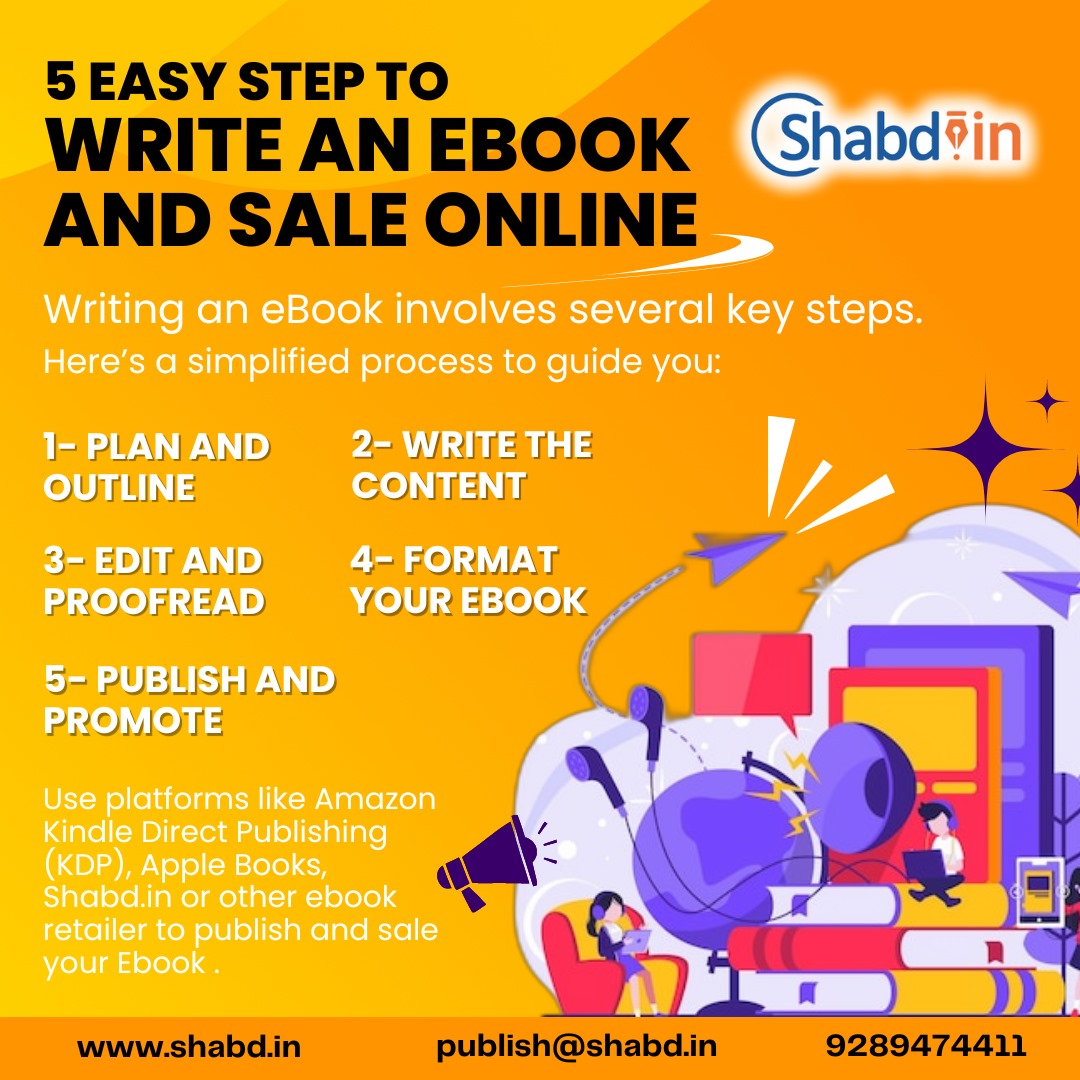Creating an ebook can be both a rewarding and strategic process, especially when following a detailed roadmap. Here’s an expanded version of the steps:
1- Plan and Outline: Begin by identifying the purpose and core message of your ebook. What problem are you solving, or what story are you telling? Research your target audience to tailor your content specifically to their needs and interests. A strong outline helps you stay organized and ensures you cover all essential points. Break your book down into chapters or sections, with each addressing a key aspect of your topic or narrative.
2- Write the Content: With your outline as a guide, dive into the writing process. Set daily or weekly writing goals to maintain momentum. Stay authentic to your voice and keep your audience in mind throughout the writing process. Whether you’re crafting a fiction novel or a non-fiction guide, aim for clear, engaging, and informative content that adds value. Focus on providing a unique perspective or insights that differentiate your ebook from others in the market.
3- Edit and Proofread: After completing your first draft, step away for a while before revisiting it with fresh eyes. This distance can help you spot inconsistencies or areas that need improvement. Consider hiring a professional editor or using tools like Grammarly for grammar checks. Editing isn’t just about fixing errors; it also involves improving sentence structure, tone, and the overall readability of your book. Proofreading should be the final step to catch typos, formatting issues, and other minor mistakes before publishing.
4- Format Your Ebook: Ebook formatting ensures that your content looks professional across different devices, whether it’s being read on a Kindle, tablet, or phone. Platforms like KDP and Apple Books have specific requirements, so use formatting software or services like Calibre or Vellum to ensure your ebook is ready for digital publication. Don’t forget about the importance of a visually appealing cover – it’s often the first thing a reader notices. A well-designed cover can significantly increase your ebook’s appeal.
5- Publish and Promote: After formatting, choose your platform for distribution. Shabd.in is one of the most popular platforms, but you might also consider Apple Books, Amazon Kindle Direct Publishing (KDP), Kobo, or Google Play Books, depending on your target audience. These platforms often allow authors to set pricing, distribution options, and even choose royalty rates. After publishing, the hard work of promotion begins. Utilize social media, your website, email newsletters, and even paid ads to get your ebook in front of potential readers. Offering free sample chapters or hosting a virtual book launch can help build momentum.
By following this comprehensive guide, you’ll not only produce a high-quality ebook but also effectively promote it to reach a wide audience, ensuring your ebook’s success.

